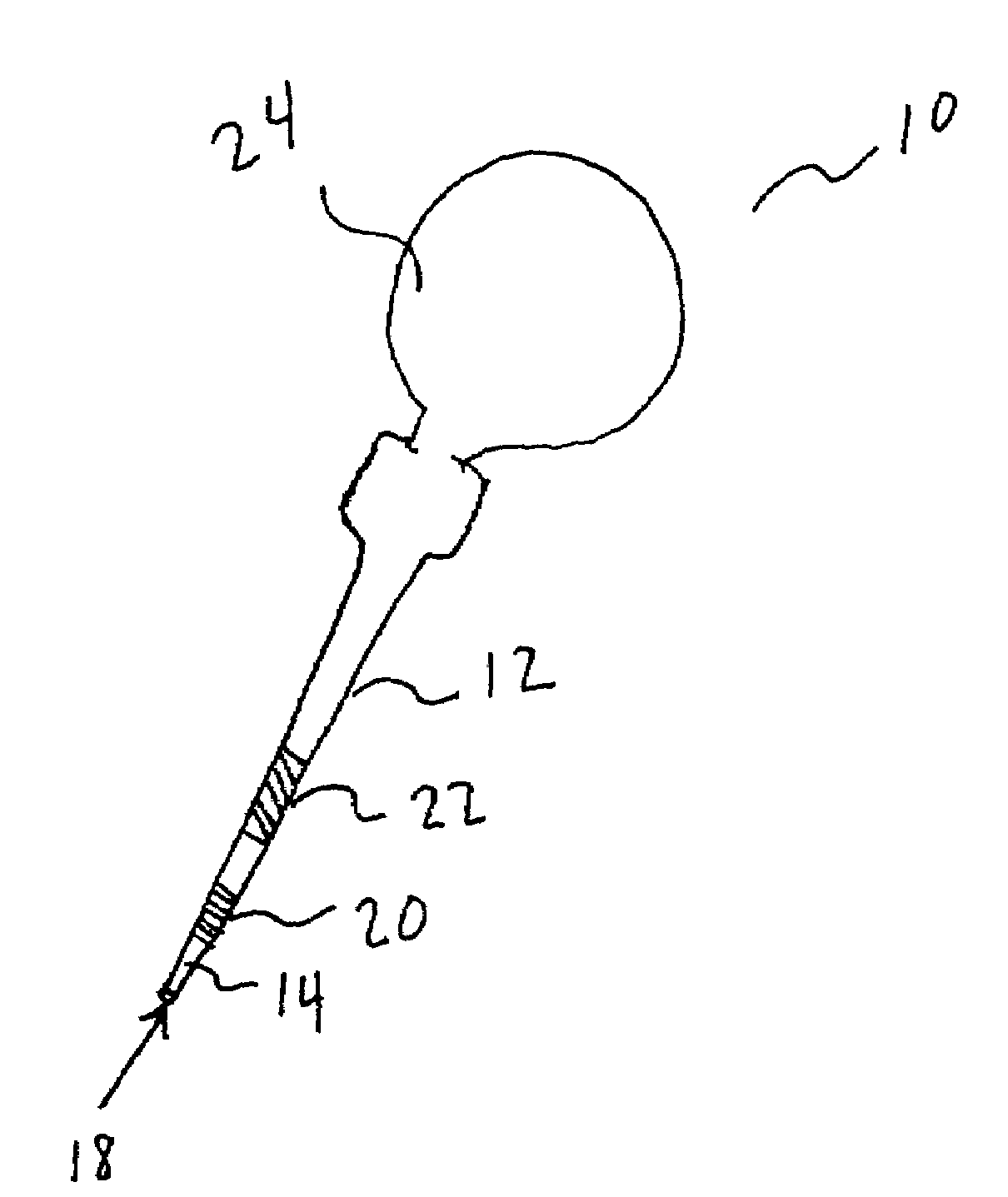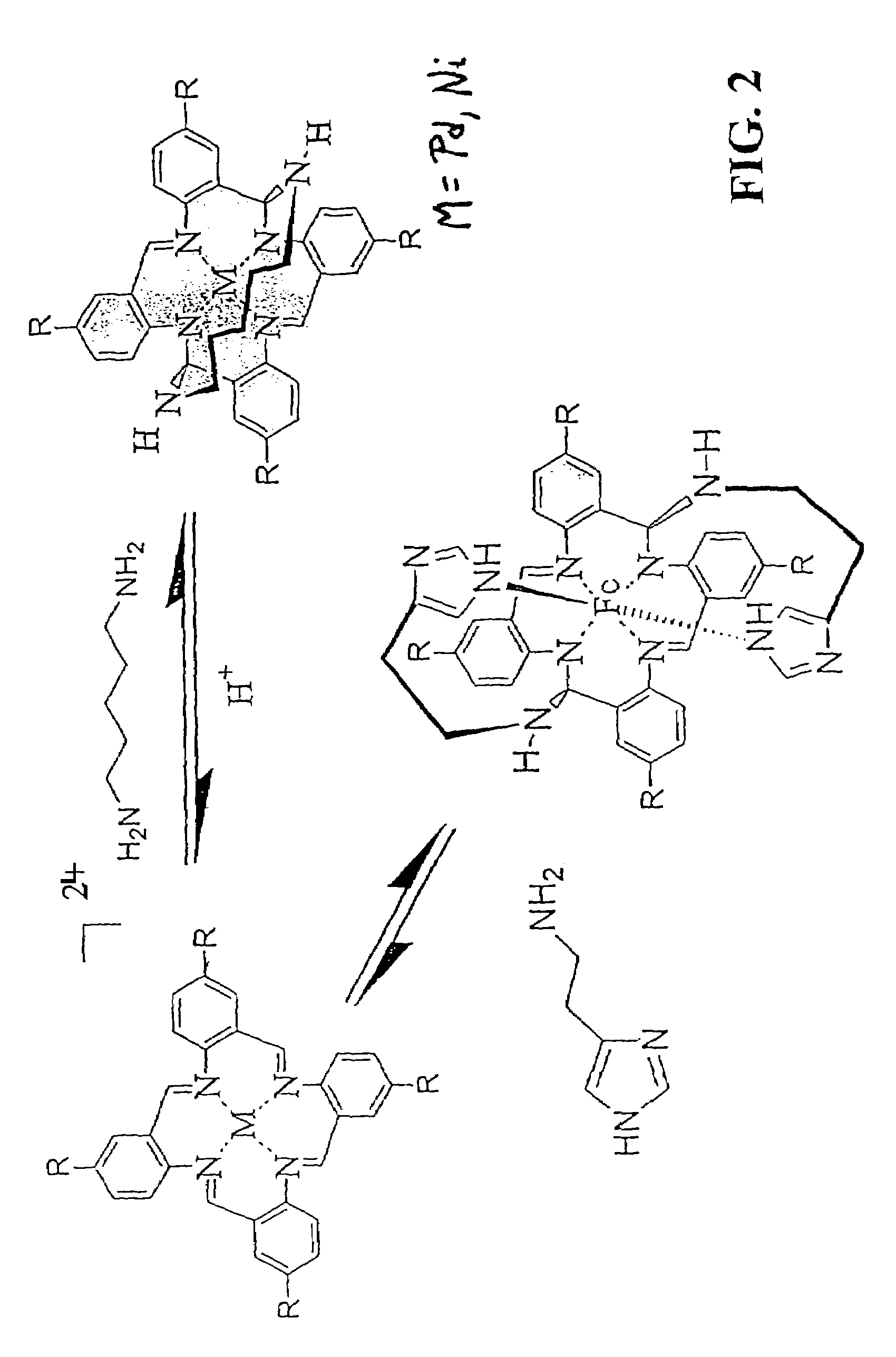Sensor for monitoring an analyte
a technology for analyte and sensor, which is applied in the direction of food testing, chemical indicator analysis, instruments, etc., can solve the problem of taking several hours to detect a noticeable color change, and achieve the effect of easy incorporation and easy detection of probable spoilag
- Summary
- Abstract
- Description
- Claims
- Application Information
AI Technical Summary
Benefits of technology
Problems solved by technology
Method used
Image
Examples
example 1
Synthesis of 5-bromo-2-nitrobenzaldehyde
[0073]3-Bromobenzaldehyde (18.5 g, 100 mmol) was added dropwise to a solution of potassium nitrate (20.2 g, 200 mmol) in concentrated sulfuric acid (100 mL) cooled to 0° C. by an ice water bath. The solution was stirred for an additional 15 minutes upon complete addition of 3-bromobenzaldehyde whereupon the entire reaction mixture was added to ice (250 g). The precipitate was isolated by filtration, and the solid was washed with de-ionized water until the pH of the wash was neutral. Drying for 12 hours under vacuum gave the yellow solid, 5-bromo-2-nitrobenzaldehyde was (11.8 g, 51% yield).
example 2
Synthesis of 5-vinyl-2-nitrobenzaldehyde
[0074]To a 100 mL Parr reactor Model # 4768 was added 4.6 g, 20 mmol of 5bromo-2-nitrobenzaldehyde of example 1 with dimethylformamide (30 mL), triethylamine (9.1 g, 90 mmol), tri-o-tolyl phosphine (0.060 g, 0.2 mmol), and palladium acetate (0.022 mg, 0.1 mmol). The reactor was charged with ethylene gas (300 psi) and heated to 100° C. for 12 hours. The reactor was then cooled to room temperature and the excess ethylene released. The product, 5-vinyl-2-nitrobenzaldehyde, was recovered by dissolving the reaction mixture in water and washing the aqueous solution with ether (3×50 mL). The combined organic solutions were dried over magnesium sulfate before filtration, followed by removal of the solvent by vacuum. The 5-vinyl-2-nitrobenzaldehyde product was purified by column chromatography with silica gel as stationary phase and chloroform as eluent to give a light brown solid (1.9 g, 53% yield).
example 3
Synthesis of VTAAB FeCl42 −
[0075]The precursor macrocycle, tetravinyl-4b,5,15 b, 16-tetrahydrodibenzo[3,4:7,8][1,5]diazocino[2,1-b:6,5-b]diquinazoline-11,22-diium (VTHDDDD), was formed by reaction of 1.9 g (10.7 mmol) of 5-vinyl-2-nitrobenzaldehyde of Example 2 with iron powder (1.86 g, 33.2 mmol), concentrated hydrochloric acid (6 mL), and acetonitrile (6.7 mL) and held at 0° C. or below for 48 hours. The VTHDDDD FeCl42−was then isolated by filtration and washed with cold ethanol (2×10 mL) to give a red solid (1.39 g, 73% yield).
PUM
| Property | Measurement | Unit |
|---|---|---|
| pore size | aaaaa | aaaaa |
| temperature | aaaaa | aaaaa |
| size | aaaaa | aaaaa |
Abstract
Description
Claims
Application Information
 Login to View More
Login to View More - R&D
- Intellectual Property
- Life Sciences
- Materials
- Tech Scout
- Unparalleled Data Quality
- Higher Quality Content
- 60% Fewer Hallucinations
Browse by: Latest US Patents, China's latest patents, Technical Efficacy Thesaurus, Application Domain, Technology Topic, Popular Technical Reports.
© 2025 PatSnap. All rights reserved.Legal|Privacy policy|Modern Slavery Act Transparency Statement|Sitemap|About US| Contact US: help@patsnap.com



